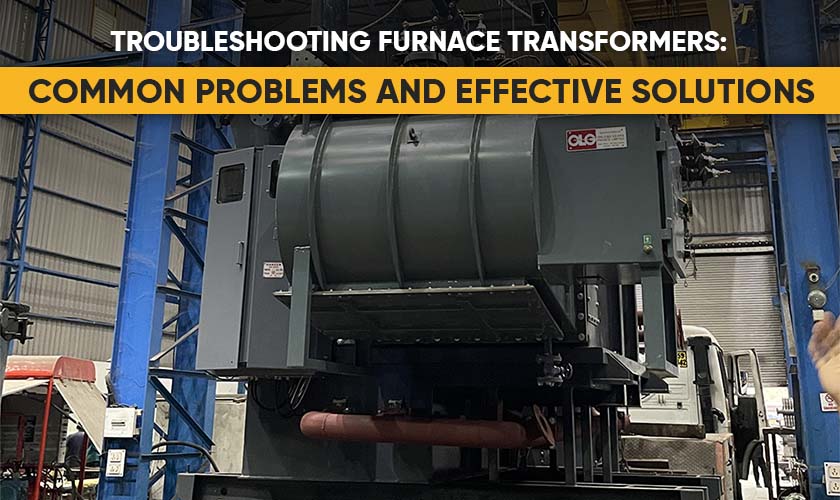Industries with electrical systems often require reliable power distribution for the effective operation of industrial equipment and massive production units. Single-phase power systems can satisfy the basic requirements but aren't adequate when it comes to large-scale industrial activities. Industries such as mining, manufacturing, and power plants have to contend with constant electrical fluctuations, equipment malfunctions, and operating downtimes if they do not have the proper electricity distribution network. This can lead to loss of production and higher maintenance costs.
Continuous and reliable power is a major requirement for the success of West Bengal and other industrial hubs. Industries that rely on compressors, motors, and heavy-duty equipment require an energy source that can manage high loads without interruptions. An insecure power system could cause voltage drops, overheating, or damage to machinery. If you don't have the correct transformer, your company could be struggling with power issues, which can lead to higher costs along with operational issues.
A three-phase transformer is the answer to this issue. It offers a reliable and efficient way to transfer and distribute power in environments with high loads. Understanding the three-phase transformer and how it functions is essential for businesses looking to improve their infrastructure for power.
What Is A Three-Phase Transformer?
The Three-Phase Transformer is an electric device that transmits power between three-phase systems. It is often employed to increase or lower voltage levels in industrial or commercial applications. In contrast to a single-phase transformer that is based on one AC (AC) pattern, the three-phase transformer operates using three alternating currents, which are 120 degrees off of phase with one another.
This transformer is crucial for power transmission since it can handle high-load power and minimizes power loss during transmission across long distances.
Key Components Of A Three-Phase Transformer
- Core: Made from laminated steel that reduces the energy loss caused by eddy currents.
- Windings: Primary and second windings are made from aluminum or copper and are responsible for transforming voltage.
- Insulation: Shields the windings from electrical failures and ensures that the operation is safe.
- Tank: Contains transformer oil, which is used to cool the system and provide insulation.
- Cooling System: Make use of oil, air, or water to cool based on the size of the transformer and the application.
- Tap Changer: Adjusts the voltage to account for variations in the power supply.
How Does A Three-Phase Transformer Work?
Three-phase transformers operate according to the principles that electromagnetic induction works. If the first winding is exposed to three-phase AC power, it produces an electromagnetic field within the core. The magnetic field causes an electric voltage to the secondary winding, transferring energy through the power output device. Primary and secondary windings may be set up in a variety of ways:
- Delta (Δ) Connection: The windings are joined end-to-end, forming the shape of a triangle.
- The Star (Y) Connection: The end of every twisting connects to a neutral point common to all windings.
The configurations are used to determine the distribution of current and voltage in the system. They are selected based on industrial needs.
Applications Of Three-Phase Transformers
Three-phase transformers are typically employed in:
- Industrial Plants: These are for powering machines as well as production lines.
- Power Generation Plants: For voltage regulation during power transmission.
- Distribution Systems: To bring back high voltage for residential and commercial consumption.
- Mining Operation: To provide reliable electricity to extraction and drilling equipment.
- Railway Systems: For traction systems that need a constant power supply.
Benefits Of Using A Three-Phase Transformer
- Efficiency: Manages high-load power with less energy loss.
- Cost-effective: Lowers the cost of installation and maintenance in comparison with three-phase single-phase transformers.
- Space-saving: Compact design takes up smaller space for industrial installations.
- Reliability: Provides a steady power supply, which reduces the possibility of operating downtime.
- Reduced Transmission Losses: Facilitates effective power transmission over long distances.
Maintenance Tips For Three-Phase Transformers
- Regular inspections: Look for corrosion, leaks of oil, and overheating.
- Oil Testing: Observe the quality of transformer oil to ensure that it is cooling effectively and insulated.
- Winding Resistance Test: Identifies problems in the windings to stop breakdowns.
- Checking the Cooling System: Make sure that radiators, fans, or pumps are working properly.
- Tests for Electrical Resistance: Determines the resistance of insulation and tests for electrical problems.
Common Issues And Troubleshooting
- Overheating: This can result from excessive load or inadequate cooling. Solution: Reducing load or improve the cooling system.
- Fluctuation of Voltages: This could indicate a problem with the tap changer. Solution: Repair and inspect the tap changer.
- Vibrations or Noises: Typically caused by loose cores or windings. Solution: Tighten components and ensure alignment.
Choosing The Right Three-Phase Transformer
The right transformer to choose depends on the following:
- Power Capacity: It is measured in KVA (kilovolt-ampere) and based on the industrial load requirements.
- Voltage Ratings: Secondary and primary voltages. Secondary voltage levels that will work with the power supply.
- Cooling Method: Immersed in oil cooling for large installations or air-cooled on smaller machines.
- Materials for Winding: Copper to ensure maximum efficiency, aluminum for low cost.
- Configuration: Delta or Star connection based on compatibility with the system.
Conclusion
The Three-Phase Transformer is a crucial component of the power system of industrial production. It helps ensure efficient distribution of power, minimizes energy losses, and aids in the continual operation of heavy machines.
Industries operating in West Bengal, especially those with high power consumption, could gain a lot from putting in the appropriate transformer. Understanding the principles of operation of the transformer, its applications, and requirements for maintenance can help companies make educated decisions and guarantee an uninterrupted supply of power.
Makpower Transformers is your reliable partner in the power sector. We provide high-quality three-phase transformers that are specifically designed to meet your needs in the industrial sector.





